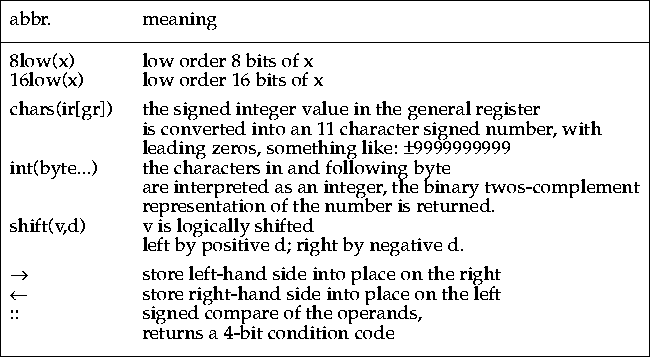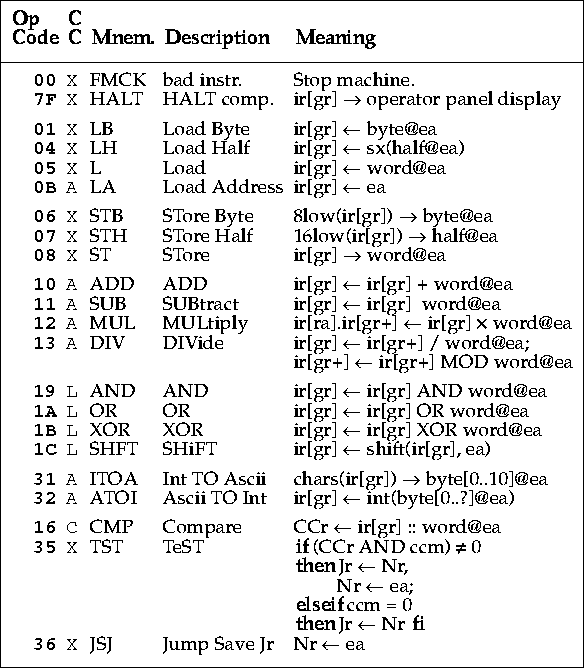
Each instruction (or machine operation) is executed as
a part of step 5 of the Hermes instruction cycle.
To define what the instruction does, the last field in figure ?
describes the instruction's action by giving a little
mini-program.
These mini-programs are written in terms of the following symbols and
functions.

A Hermes instruction usually refers to a block of data in memory. It refers to the block by using the effective address, computed in step 4 of the instructions cycle. The effective address is used to locate the first byte of the block data, this is the left-most or lowest-address byte of the block. The length of the block addressed depends on the instruction, most blocks are of fixed length and are referred to in the definitions by the abbreviation: object@ea. Where ea means the effective address computed for this instruction. The object can be a word, half-word, or byte depending on the instruction.
Most of the functions and operators used to describe the meaning of machine instructions will have obvious meaning like the arithmetic operators ( +, -, ×, / ), and the bit-wise word length logical operators (AND, OR, and XOR). Other functions and symbols that are perhaps less obvious are found below.


| Hermes Computer Operation Codes and Definitions |
Some of the definitions above while formally correct are perhaps
a bit hard to understand so it is worth giving examples and
explaining why the machine acts the way it does.